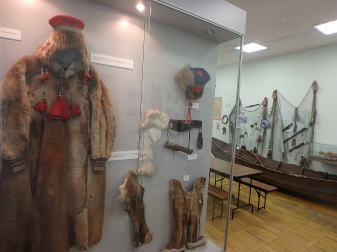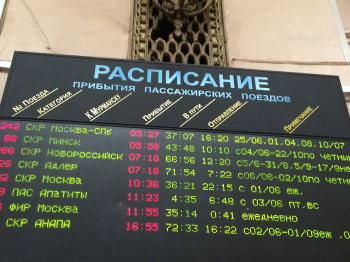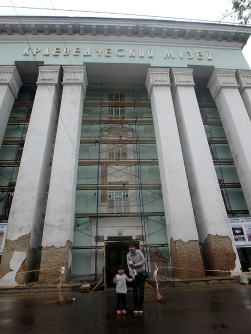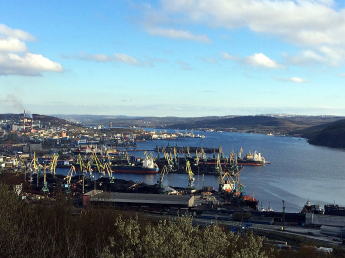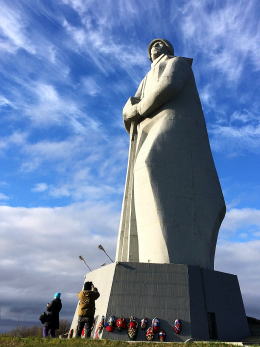The view of Murmansk city and the Kola river beyond.
- Back
Murmansk is the northern most station of a civilian railway in the world.
The timetable hung in the hall reads 36hours from Moscow - while it's not
even 2hours by air.
Posing like a Sami family.
The exhibition was wide ranged - covering flora and fauna of the north, cultural, and historical legacies of the northern tribesmen.
The similarity with Eskimo in North America, or Ainu people in the northen
Japan is striking.
During the WWII, Murmansk became a strategic port for the Soviet - US alliance. For that reason Nazi Germany bombed the city heavily, annihilating 75% of the it with mega scale air raids in 1944. The defense force persisted, playing instrumental role to the eventual victory over Germany.
Today the statue of a soldier, Allyosha, looks over the city from the top
of a nearby hill.
The museum is one of the other (not many) tourist attractions. While the
appearance outside does not look inspiring, the contends inside was rich
and interesting.
In the succeeding cold war era, Murmansk became home to the Soviet's northern navy. Particularly for the nuclear powered submarines.
Thank God those sinister days are over (or the tension has been reduced).
Today, retired nuclear ice breaker, Lenin, is moored at the harbour welcoming
visitors aboard, even to take a look at the (now dormant) reactors. (Place
your pointer on the pic).
2,000km north of Moscow, Murmansk, with 300 thousand inhabitants, is world's
largest city deep inside the arctic circle.
The area was a part of the trade route between the Norwegian, Finns and
the nomadic Sami people in the ancient time. But it was only in 1916 when
Russian sought to fortify its northern marine port, Murmansk received big
scale investment and rapid modernization.
 Murmansk
Murmansk
